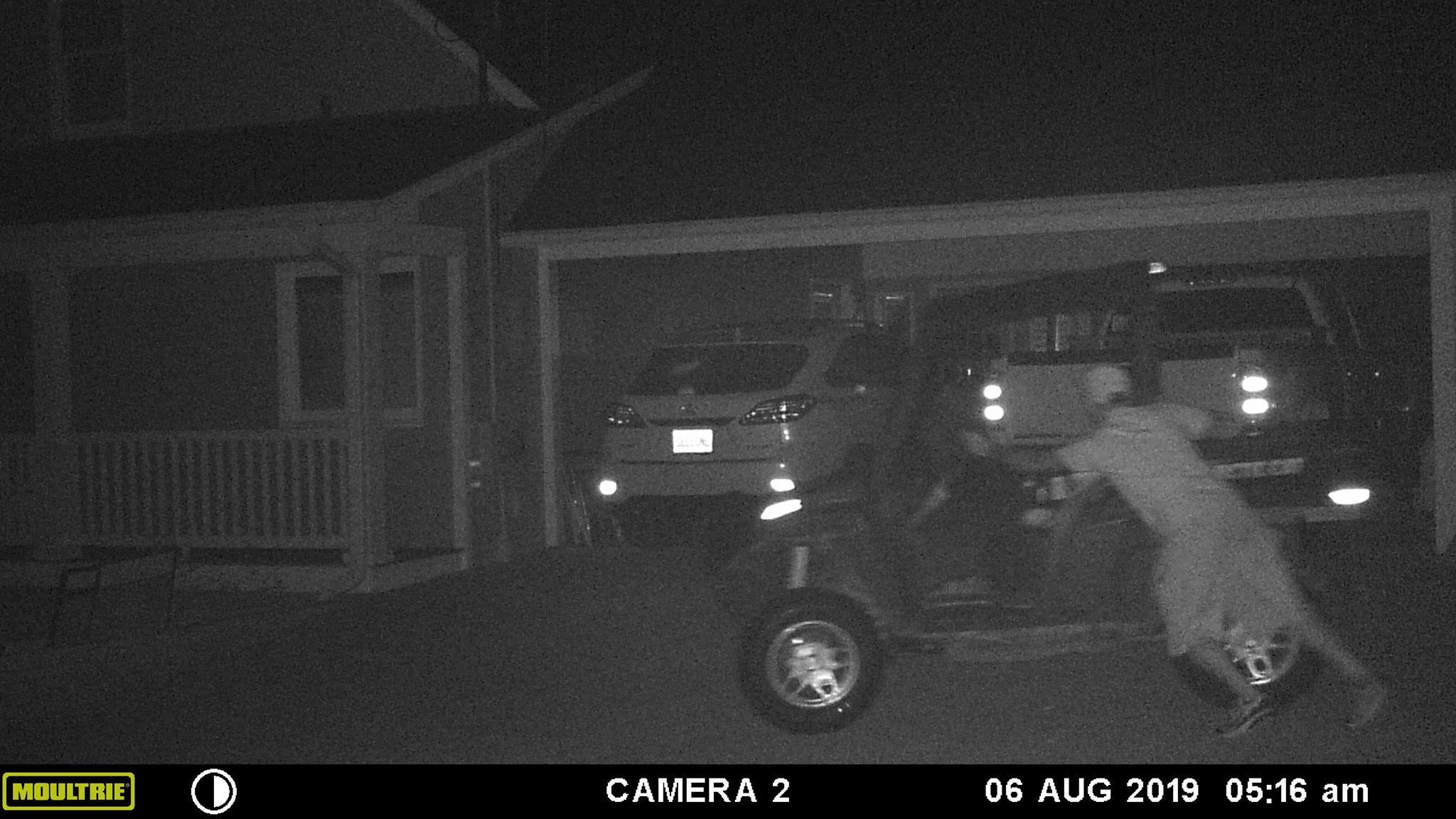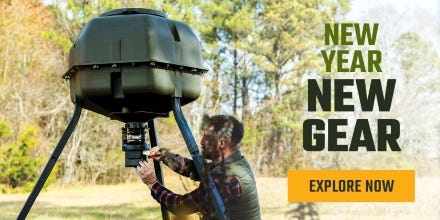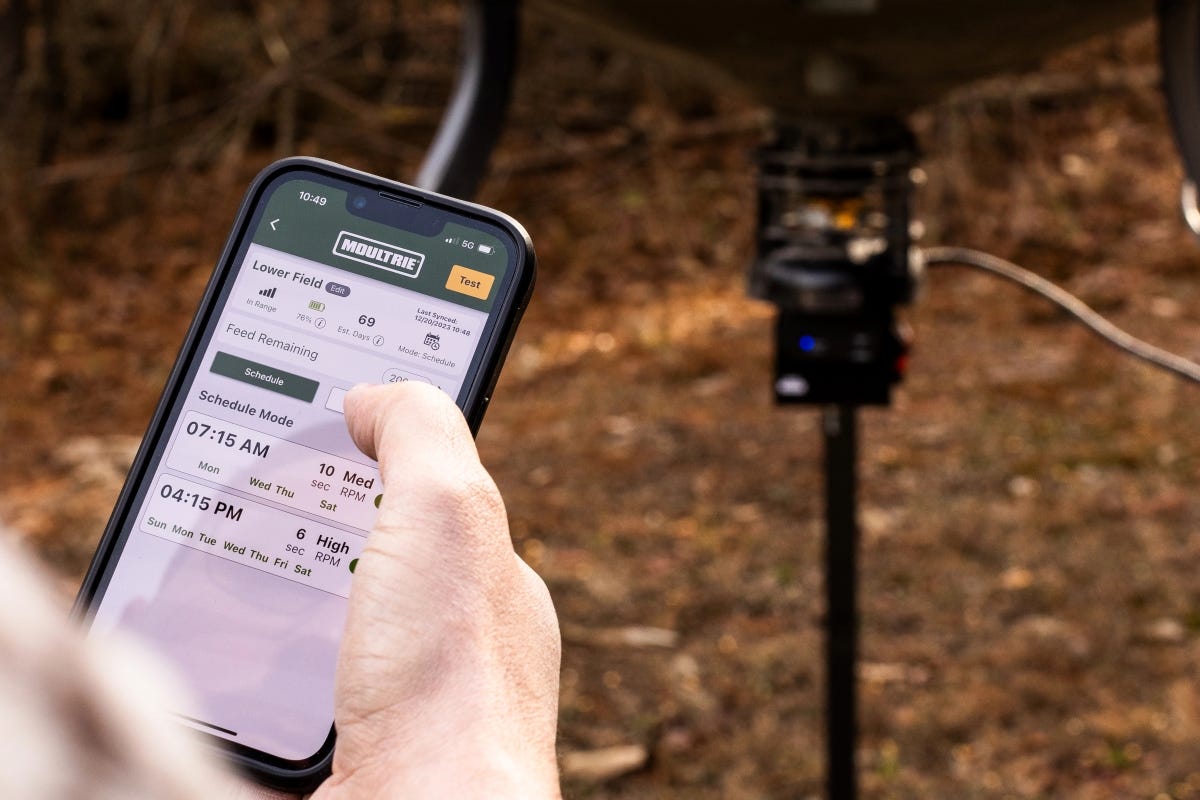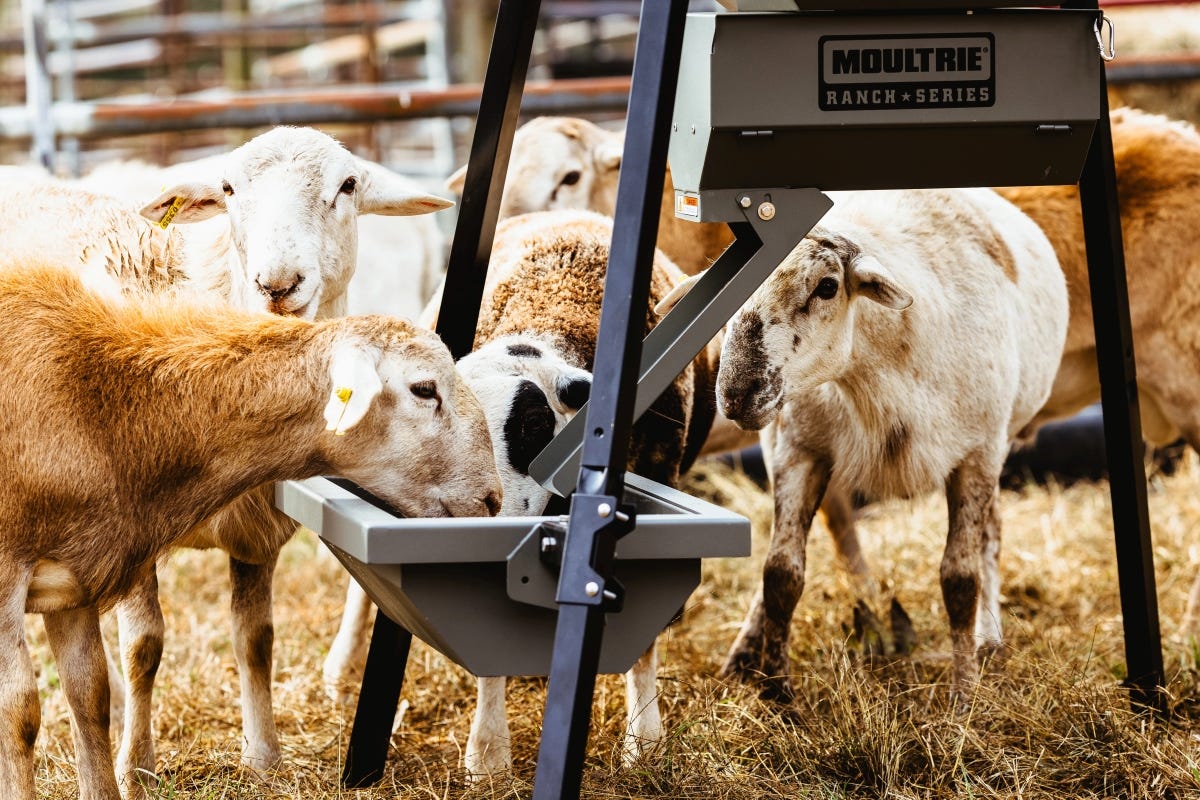- Sep 9, 2019
Using Trail Cameras For Security

Trail Cameras For Security
When to Use a Security Trail Camera | What Type of Trail Camera is Best for Security | Trail Camera Placement
Hunters across the world use trail cameras to scout for animals on their property, but did you know that you can also use trail cameras for security purposes? Whether you use a trail camera for home security or to watch for trespassers on a remote property, game cameras are an excellent option for a variety of surveillance purposes and your peace of mind.
While dedicated security cameras are nothing new, they can be frustrating. In remote locations, where power and internet connection are scarce, they could be impossible to use. Even many systems that claim to be wireless require a base unit to be plugged in. Trail cameras address this issue, with true wireless functionality, and cellular trail cameras offer immediate photos and videos. They came in handy for one person whose Moultrie game cameras led to the arrest of two treestand and camera thieves! Let's take a closer look at using trail cameras for security and what to look for in one.

Where and When to Use Trail Cameras for Security
You can use trail cameras for a variety of purposes. For home surveillance, you could attach one outside your front door or yard to help you keep watch. You can also use one to protect your property from thieves and trespassers alike, even when you're far away. While you can pretty much use trail cameras anywhere you may want to keep an eye on things, there are a few areas where they can be especially useful.
These places include:
- Remote locations that may not be within the range of a wifi network or electricity. Many remote properties or hunting camps fit this description and benefit from the attached network of a cellular camera. We'll talk more about those features in the next section.
- Locations that are vacant for long periods. You may not always be able to visit your camera to replace batteries constantly or check the photos. Trail cameras are meant to be left alone for a while, and cellular options still update you when you're away. You could also use your camera for security in the off-season, when you won't be at your site very much, and use it for tracking game the rest of the year.
- Gate entrances. If trespassing is an issue, trail cameras are a great way to catch the perpetrator in action.
- Existing camera locations. Your camera will already do this, but it can also offer you a way to watch for thieves at your bait sites or other hunting sites where you're looking for animals.
It's easy to see how trail cameras can work in remote areas or hunting properties but are trail cameras good for home security? The short answer is yes, as trail cameras are designed to take fast photos of moving creatures in low- or no-light conditions, and cellular options can immediately notify you when a photo is triggered. That's pretty much what security cameras do, but they tend to use more power and require electricity, cost more money and be more challenging to place. A game camera is a great alternative that may meet your needs more effectively.
There are plenty of times when a hidden trail camera is the right call, like if you need any of the following.
- Evidence during vandalism, trespassing or burglary:Trail cameras are great at capturing detail in pitch black, so you can get an identifiable image of them in a variety of lighting conditions. Many camera models offer video and audio, as well, so you get a full idea of what is going on. Plus, most models include date and timestamps, which can be useful if you need to get the authorities involved or want to know precisely when that strange person was snooping around your yard.
- Completely wireless options: If you don't have a convenient electrical hookup, getting traditional cameras in place may be more complicated than you thought. Cellular hunting cameras typically run on standard AA batteries and can send images over a network — no wires needed.
- Vide features: Many trail cameras capture video that is high in quality and can help you more accurately identify your troublemakers.
- Instant updates: While you could review your footage after an incident occurs, this approach, which applies to traditional game cameras, doesn't give you much room to take preventative action. With cellular trail cameras, you can receive notifications within minutes of the photo being taken. This instant response gives you time to alert the authorities and possibly intervene if necessary. Wireless photo updates are also useful if your thief spots the camera and manages to take it. They may think they're taking any evidence with them, but you've actually got everything you need on your phone!
- Superior nighttime performance: Using trail cameras for security makes use of its exceptional low and no-light performances. Features like no-glow flash options and detection ranges can influence this, but for the most part, trail cameras are known for having quality nighttime results. Of course, if you have an incident in the daytime, those photos are also excellent. Some cameras specialize in one or the other, so make sure you know what you're getting.
Types of Trail Cameras for Home Security

Now that we've answered the question of when to use them, how do you choose the best trail camera for security needs? If you've ever shopped for a game camera, you know there are many different options available. So what features should you look for, and how do you know your trail camera will work for security?
- Flash Type
One significant part of a good security camera is the flash. You can typically find trail cameras with the following flash options.
- White flash: This flash works like a standard camera flash and washes the scene with a bright light, but gives full-color results. It will definitely alert the perpetrator to your camera.
- Red glow: Red glow cameras work in the dark, emitting a infrared (IR) light to take the photo. While it may fool plenty of deer, the subtle glow can still give away the location of a security camera to a human perpetrator.
- Invisible flash, no glow, black glow, etc: Though it has many names, an invisible-flash camera emits an infrared flash undetectable by humans. This kind of flash is usually the best choice for security cameras since it won't draw the person on your property toward the camera. An "i" at the end of a Moultrie model number indicates that it offers invisible flash.
If your goal is to get a fast photo so you can alert the authorities, an invisible flash is usually your best bet. While a white flash could potentially scare off a trespasser or thief, another likely scenario is that they could locate the camera and take it. If you aren't confident in your physical locking mechanism, you may want to stick with a no-glow trail camera for security. If, on the other hand, you think your camera is impossible to remove without special tools or access to your lock, the bright flash may be enough to scare someone off.
- Video
Another useful part of your trail camera is its video functionality. Often, people prefer a video of a perpetrator since it can offer more details than a single image. Many camera models offer full-HD footage and audio in addition to photos. If this is an important feature to you, make sure you get a camera with video capabilities.
- Cellular Capabilities
If you want a security trail camera that can send you notifications when it senses movement, you'll need one with a cellular connection. This connection enables it to send photos and videos directly to your phone via email and text messaging or through an app. Cellular trail cameras typically work on Verizon and AT&T networks, offering exceptional coverage even in remote areas. Some companies only offer their services for steep monthly prices. Moultrie Mobile plans start at just $4.99.
You can get a camera with cellular features in one of two ways.
- Purchase a cellular camera. All the necessary technology is built into the camera. Moultrie has developed an AT&T trail camera, the XA7000i and a Verizon trail camera, XV7000i. These cameras have high-quality, 20-megapixel images, a vast 80-foot detection range and a .3-second trigger speed. Plus, they record in full HD and can immediately send you your photos and videos.
- Connect a traditional camera to a cellular modem. Many of Moultrie's standard trail cameras can join the world of mobile access with the help of a field modem. We offer the MA2 and the MV2, for AT&T and Verizon, respectively.
A cellular camera's app features can also come in handy. For instance, the Moultrie Mobile trail camera app offers image recognition capabilities to "smart tag" photos with people and vehicles in them. You can also receive alerts when someone or something is tagged.
- Other Factors to Consider
The number of options that come with selecting a trail camera can be dizzying. Here are some that you'll want to look out for when buying a trail camera for home surveillance.
- Picture quality:Most trail cameras will beat the grainy quality of a standard closed-circuit television (CCTV) security camera. Megapixels are usually a good way to compare the image quality of two cameras.
- Trigger speed: If a perpetrator is running through your property, a slow trigger speed could completely miss them or record a blurry image. A fast trigger speed, at least under a second, can help you catch them in the act.
- Network signal strength: Whether you're working from a wifi-connected device or a cellular one, a weak signal could bar you from receiving updates or significantly slow them down. It could also cause your camera to lose battery much more quickly, as it uses more juice trying to find the signal. Make sure your network has a strong signal at your camera location.
- Locks: In case your perpetrator or a curious animal sees the camera, you can keep it safe by using a sturdy lockbox and securing mechanisms. Some cameras have these included.
How to Place and Hide Your Security Trail Camera
Another bonus of working with trail cameras instead of security cameras is that you don't need any special expertise to set them up. You don't have to hire people to snoop around your property, and you can get it done quickly. You will, however, have to be smart about where you place a trail camera.
People, unlike deer, will see your camera if you put it somewhere obvious. And when that happens, well, they know where to find those incriminating photos that were just taken. You'll have to be a little sneakier when placing your game camera for home security or surveillance. Consider the following when setting up your hidden trail camera.
- Place the camera at an angle above or below the line of sight. Ten or more feet up in the air in a tree or on a pole is usually a good spot. Other places include the corner of a garage ceiling and the edge of a roof. Avoid placing it where it would be right in front of your trespasser.
- Camouflage your camera. You could put it inside thick hedges, with foliage cut away so the motion sensor can still see the area. Another option is to place it inside or make it look like a birdhouse. Tucking it away in tree branches could conceal your trail camera, too.
- Don't face the camera toward a direct light source. This light could cause lens flare that would wash out your subject. Remember which direction the sun sets and rises. Either of these could send a bright glare across your shot, so look for a shaded area that you could place your camera in.
- Keep the camera secure. Use a security box and strap your camera down tightly. Try using mounts that require special tools to open.
- Consider where your intruders may enter. Will they be on foot or in a car? If it's the latter, you might be able to snag a license plate number if you angle your camera appropriately.
- Keep your detection and flash range in mind. You might try to move further back to get as much of your land in the frame as possible, but don't move so far away that your camera can't reach.
Moultrie cameras come standard with straps, but placing one at an angle with just straps can be difficult. We have various camera-mounting tools like screw-in mounts and multi-purpose mounting brackets to give you a little more flexibility in placing and hiding your camera. These mounts also offer added security, since an intruder or thief would have to have tools to remove the camera.


While there have been some crazy happenings caught on camera over the years, Utah hunter “Skip” Sheldon Roberts didn’t expect to capture Park City Assistant Attorney Polly Samuels McLean and her husband Andrew McLean stealing his treestands and another game camera on September 4, 2018.
“I went up to go hunting in Park City, Utah,” says Roberts. “I was checking my trail cams on the way up to my treestand. I discovered the attached photo on a camera just down the trail. I zoomed in and thought it looked like my treestands were on this guy’s back.”
Roberts has been legally hunting mule deer and elk on this section of public land for 5 years. In that time, he’s had another game camera stolen and on numerous occasions someone will smear mud over his camera lens, so he can’t get pictures. “Earlier this year I had the strap ripped off and the camera was hanging by the cable lock. The picture was of an approximately 10-year-old boy with his dad standing in the background,” says Roberts.
Roberts has followed the law to a “T” with all of his hunting equipment, but that didn’t stop the McLeans from stealing his equipment. Once Roberts got to his hunting spot, he discovered that his treestands and another camera were in fact gone. Anti-hunters are bold and destructive in this part of Utah. So much so, that hunters have started to use social media to help one another when their equipment is damaged or stolen. Roberts posted the pictures to one of these sites, which helped identify the woman as a city employee.
As Roberts was driving off the mountain and back down into civilization, he passed through a residential area below where he hunts. As he was doing so, he happened to see a dog that looked identical to the one in the photo with the people who stole his stands. Roberts tells the story form here.
“The dog pictured in the camera was instrumental in catching the thieves. I saw the dog running up the road as I was heading down through the neighborhood. There were three little girls on the side of the road and I asked them if that dog was theirs? They said, ‘No, but it is heading home now.’ I turned my car around and followed the dog. It veered off the road and went and sat down on the porch. As I was calling the police back to give them the address, a car pulled up and two women got out. One of them looked just like the woman on the camera.
“The woman approached my car and asked if she could help me with something? I told her yes and showed her the picture. I asked if that was her and her dog? She said, ‘Yeah possibly, what is it concerning?’ I scrolled over to show the picture of her husband and said, ‘It appears that your husband has two of my treestands and trail cam on his back. Do you happen to know where they are because I really want them back?’ She looked concerned about the picture and acted nervous. Then the husband came down the hill on a mountain bike. I went through the same conversation with him. He had similar responses. I told them that I have contacted the police and they will be at their house later that night. His response was, ‘Great, we will be here all night.’
The police did show up at the McLean’s and with the evidence from Robert’s Moultrie camera and his hunting property located at the residence of the perpetrators, the couple was arrested on September 6, and now face felony theft charges as well as misdemeanor charges for criminal mischief. For full news story, click here.
Where to Find the Best Selection of Trail Cameras for Security
When you're protecting your home, you want a camera that is fast, reliable and takes great photos. A trail camera is all of that and more. If you think a game camera for home security is right for you, Moultrie's got you covered. Between our state-of-the-art cellular cameras, field modems and traditional cameras, you can start using these tools to get a leg up on thieves, trespassers and any other criminals that step foot on your property.
Dan Moultrie created the first trail camera in the '80s, and we've been innovating ever since, making Moultrie a leading and trusted equipment provider for outdoorsmen of all types. Browse our selection of Moultrie trail cameras today to see how they can help keep you, your family and your property safe.
*Last Updated 05/17/2022






